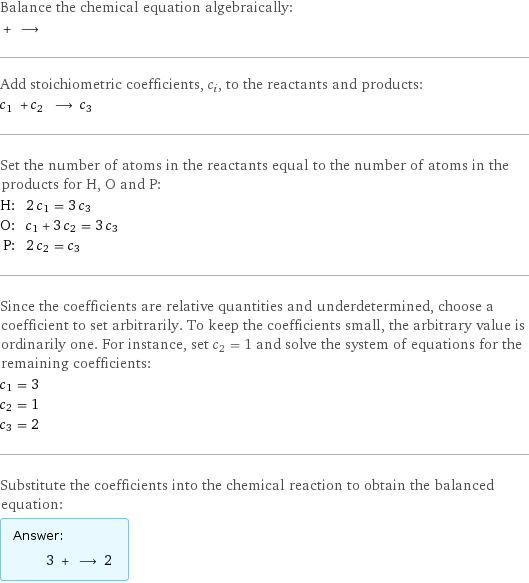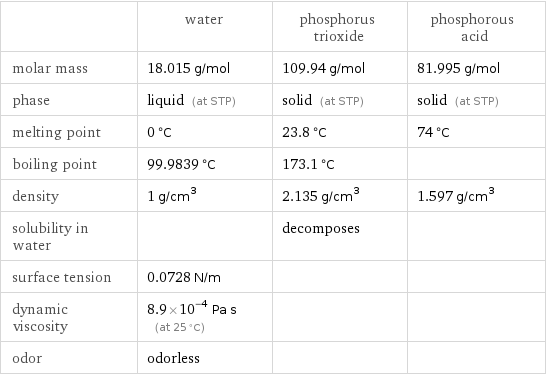Input interpretation

water + phosphorus trioxide ⟶ phosphorous acid
Balanced equation

Balance the chemical equation algebraically: + ⟶ Add stoichiometric coefficients, c_i, to the reactants and products: c_1 + c_2 ⟶ c_3 Set the number of atoms in the reactants equal to the number of atoms in the products for H, O and P: H: | 2 c_1 = 3 c_3 O: | c_1 + 3 c_2 = 3 c_3 P: | 2 c_2 = c_3 Since the coefficients are relative quantities and underdetermined, choose a coefficient to set arbitrarily. To keep the coefficients small, the arbitrary value is ordinarily one. For instance, set c_2 = 1 and solve the system of equations for the remaining coefficients: c_1 = 3 c_2 = 1 c_3 = 2 Substitute the coefficients into the chemical reaction to obtain the balanced equation: Answer: | | 3 + ⟶ 2
Structures

+ ⟶
Names

water + phosphorus trioxide ⟶ phosphorous acid
Chemical names and formulas

| water | phosphorus trioxide | phosphorous acid Hill formula | H_2O | O_3P_2 | H_3O_3P name | water | phosphorus trioxide | phosphorous acid
Substance properties

| water | phosphorus trioxide | phosphorous acid molar mass | 18.015 g/mol | 109.94 g/mol | 81.995 g/mol phase | liquid (at STP) | solid (at STP) | solid (at STP) melting point | 0 °C | 23.8 °C | 74 °C boiling point | 99.9839 °C | 173.1 °C | density | 1 g/cm^3 | 2.135 g/cm^3 | 1.597 g/cm^3 solubility in water | | decomposes | surface tension | 0.0728 N/m | | dynamic viscosity | 8.9×10^-4 Pa s (at 25 °C) | | odor | odorless | |
Units
